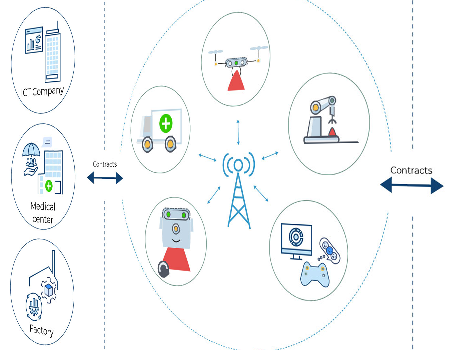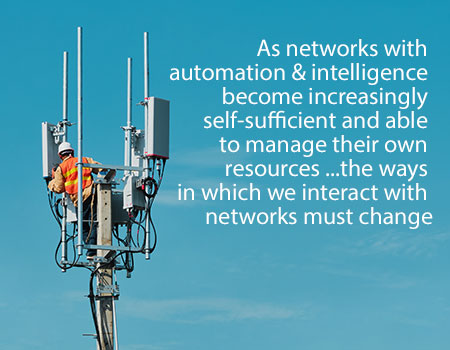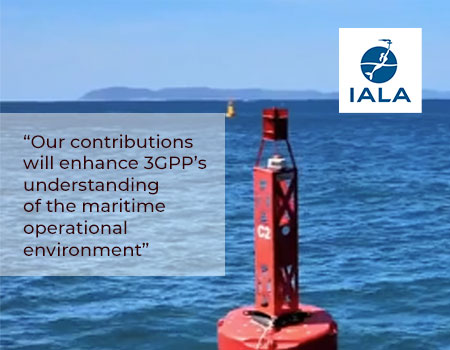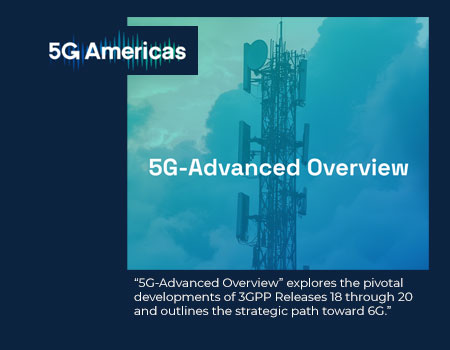By Dongwook Kim, 3GPP MCC
Einstein's theory of general relativity indicates that the speed of light is constant and that nothing can travel faster than the speed of light. Telecommunications is not an exception and, despite the continued efforts to enhance performance, there always is limit to where latency can be reduced (i.e. the theoretical minimum is the total length of distance divided by the speed of light).
To circumvent this constraint, the concept of edge computing has been considered. Edge computing, simply put, is where core network and cloud computing capabilities are moved to the "edge" of the network closer to the customers, reducing the physical distance for communications. This page describes the technology and relevant 3GPP works to acquaint the reader.
Why Edge Computing?
The most prominent benefit of edge computing is the reduced latency. Taking an illustrative example below (Figure 1) for a 5G network, one observes that it is possible to reduce the latency significantly (factor of 2 to 10 depending on assumptions) with edge computing
 Figure 1 Latency benefits with edge computing
Figure 1 Latency benefits with edge computingIt is also possible to optimise data flows and leverage local processing/storage with edge computing, which may reduce the operational costs and complexities associated with moving data to/from cloud servers.
Furthermore, edge computing can improve security and privacy protection, as the data is kept at the edge (or even in the customer premise). Whilst inadequate security measures can make devices and the network nodes in edge vulnerable to hacking, the data possessed by the edge devices and network nodes tend to be limited compared to the public cloud servers that store massive data. This hopefully will reduce incentives to hack edge networks.
Edge computing can also enhance reliability and resiliency of the system. The possibility of having local processing/storage can enable Information Technology (IT) applications to function continuously even in the midst of intermittent connectivity. For example, when local servers are able to process most of the demand and synchronise central cloud servers occasionally, the IT applications do not have to rely on connectivity and central servers to function. Furthermore, edge computing systems may enhance resiliency of the overall systems. As functionalities are distributed over different edges, a failure of an edge does not lead to failure of other edges. On the other hand, if central server fails, the centralised computing system fails overall.
The benefits above translate into business potentials and new use cases in various sectors. Edge computing can be applied to sectors like autonomous vehicles, medicine, and industrial Internet of Things (IoT), as these sectors require data processing, analysis, and instructions to be made in near-real-time fashion. The public sector can benefit from edge computing with near-real-time processing and analysis of data, applied to control of crowds and transports. Transport hubs such as ports can introduce edge computing to coordinate logistics of goods and passengers. Some readers may already notice that many of the enabled use cases correspond to those of non-public network. This is because edge computing technology is vital to implementation of non-public network in many deployment options.
Edge Computing Overview
The concept of edge computing is not confined to 5G, and the most general concept of edge computing is referred to as Multi-access Edge Computing (MEC), which is access agnostic. MEC is defined to be a system which provides an IT service environment and cloud-computing capabilities at the edge of an access network which contains one or more type of access technology, and in close proximity to its users according to ETSI GR MEC 001.
In practice, the concept of edge is not limited to the edge of the access network and can vary from the end device (e.g., sensors, smartphones, etc.) used to the local data centres of service providers. In the spectrum, the servers installed in the customer premise and the access network data centres (e.g., baseband units (BBUs) of the radio access network) can be included.
At 3GPP, the edge computing work revolves around the definition of MEC with focus on 5G, where the IT service environment and cloud computing capabilities are provided at the edge of the Next Generation Radio Access Network (NG-RAN) and the edge computing capabilities are natively supported in the 5G Core (5GC)[1].
3GPP & Edge computing
The overview of 3GPP edge computing work is as depicted in Figure 2. It consists of five layers with the following scope:
- Application layer: consumption of 3GPP specified edge computing capabilities.
- Edge enabler layer: the overall functionality provided by the enabler entities in support of the consumer applications .
- Edge hosting environment: An environment providing support required for Edge Application Server's execution.
- Edge management layer: management of the edge system, including the network, enabling layer (or platform), and the application.
- 3GPP transport layer: overall functionality provided by the 3GPP networks in support of the consumer applications and edge enabler entities.

Figure 2 Overview of 3GPP edge computing (3GPP TS 23.558 v17.4.0)
Out of these five layers, 3GPP defines specifications for the edge enabler layer, 3GPP transport layer, edge management layer, and some part of application layer (relevant to enabling of edge capabilities to the applications). Therefore, the following subsections will describe the edge enabler layer (along with application layer functions to enable edge capabilities), the 3GPP transport layer, and the edge management layer.
Edge enabler layer
The edge enabler layer provides Application Programming Interfaces (APIs) for the application developers to leverage edge capabilities. With this layer, the application developers are able to locate, connect, and switch to the most suitable application server on the edge network, and to exploit the potential of the underlying 3GPP network in optimising the service. The enabler layer follows the architecture in Figure 3.

Figure 3 Edge enabler architecture (3GPP TS 23.558 v17.4.0)
The architecture comprises of:
- Application Clients (ACs) or Edge Application Clients (EACs) is the application resident in the User Equipment (UE) performing the client function. Whilst most of the ACs are out of scope for 3GPP, the procedures related to service continuity (ACR: Application Context Relocation) is within the scope of 3GPP. The implementation of ACR may require ACs involvement.
- Edge Application Servers (EASs) is the application server in the edge performing the server functions, where the AC connects to the EAS in order to reap the benefits of edge computing for the application.
- Edge Enabler Server (EES), primarily responsible for enabling discovery of the EASs
- Edge Enabler Client (EEC), providing support functions, such as EAS discovery to the ACs in the UE (or the device)
- Edge Configuration Server (ECS), providing configurations to the EEC to connect with an EAS.
Note: that EASs and EESs are contained within the Edge Data Network (EDN), and the ACs and EECs are contained in the UE. EAS, EES and ECS are able to interact with the 3GPP core network.
Transport layer
In the transport layer, the 5G network is equipped with various functions to support edge computing. For example, the ability to select/reselect user plane functions to steer/route traffic locally and the support to connect to the local area data network in selected regions.
Most importantly, the 5G network supports 3 connectivity models for edge computing as shown in Figure 4.
- Distributed anchor point: this is where the PDU - Packet Data Unit - Session Anchor (PSA) User Plane Function (UPF) is in the local site and all UE traffic are directed to the PSA UPF in the local site. Re-anchoring is used when the traffic routing needs to be optimised.
- Session breakout: this is where a PDU session has a PSA UPF in the central site and one or more PSA UPF in the local site. Through the Uplink (UL) Classifier or multi-homing Branching Point mechanisms, the edge computing application traffic is selectively diverted to the PSA UPF in the local site. The local PSA UPF may be changed (e.g., due to mobility of UE).
- Multiple Packet Data Unit (PDU) sessions: this is where some applications use PDU sessions with a PSA UPF in the local site and others use PDU sessions with a PSA UPF in the central site. The local PSA UPF may be changed (e.g., due to mobility of UE).

In addition, the 5GC supports Edge Application Server Discovery Function (EASDF), which enables the discovery of the IP address(es) of the relevant EASs for the edge application. This would be required, for example, when the application searches for an EAS to connect when starting or when a new EAS needs to be selected for invoking certain features.
Figure 5 shows the reference architecture of the 5G System (5GS) for supporting edge computing. Note that the left is the case without Uplink Classifier (UL CL) and/or multi-homing Branching Point (BP) mechanisms and the right is the case with UL CL / BP.
Edge management layer
The management of edge computing takes into account three types of stakeholders: edge computing service providers (ECSP), application service providers (ASP), and PLMN operators. Here, ASP is responsible for the creation of EASs and ACs, ECSP is responsible for the deployment of EDN that contain EAS and EES, and PLMN operator is responsible for the deployment of 5G network functions. Therefore, the 3GPP management system framework for edge computing consists of the PLMN management system and the ECSP management system, where the both systems can interact with ETSI Network Function Virtualisation (NFV) Management and Orchestration (MANO) to perform lifecycle management functions (see Figure 6). The capabilities provided by the Edge Computing Management (ECM) system includes lifecycle management, performance assurance, fault supervision, and 5GC Network Function (NF) provisioning.

Standardisation landscape and harmonisation
Overview
As mentioned before, the concept of edge computing is not limited to mobile communications and the standardisation of the technology involves groups other than 3GPP. This section will guide the reader on how 3GPP working groups divide the labour and how other organisations specify edge computing related specifications. Building on top of this, how the different specifications and requirements are harmonised will also be presented.
3GPP
At 3GPP, the edge computing work is divided among selected working groups, where SA working groups specify the stage 2 specifications and CT working groups specify the stage 3 specifications. In terms of stage 2, three SA working groups are in charge of the three layers of the edge computing framework (see Figure 2). For stage 2, the work is divided among the SA working groups, where SA2 is specifying aspects relevant to the 3GPP transport layer, SA5 specifying the edge management layer, and SA6 specifying the edge enabler layer.
3GPP's work on edge computing started already in Release 15, where the support for edge computing functionalities were defined in the early versions of its 5G specifications. In Release 17, normative work on the enhancement of 5G Core to support edge computing and the enabling of edge applications started, along with other important aspects such as security, charging, and management. 3GPP is continuing its work on edge in Release 18, including the alignment with external organisations, as described in the following subsections
ETSI MEC
ETSI Industry Specifications Group (ISG) MEC defines the specifications relevant to the edge computing, where the specification is access agnostic and is not confined to mobile communications. Whilst it is not in the scope of this page to describe the ETSI MEC architecture, it is worthwhile to note that the alignment with ETSI MEC and 3GPP specifications are already happening, as shown in Figure 7.
According to this figure, 3GPP's edge enabler architecture and the ETSI MEC architecture complement one another. The edge enabler architecture defines the 5G access specific interactions and interfaces, while the ETSI MEC architecture includes the MANO aspects of the edge computing. Furthermore. it can be observed that the EAS corresponds to the MEC app in ETSI MEC while the EES corresponds to the MEC platform in the ETSI MEC architecture, meaning that further alignment and harmonisation of the following interface pairs can be beneficial: EDGE-3 and Mp1, EDGE-9 and Mp3.

GSMA OPG and 5GAA
In addition to ETSI MEC, two market representative partners (MRPs) of 3GPP - the GSM Association (GSMA) Operator Platform Group (OPG) and 5G Automotive Association (5GAA) - are looking to apply the edge computing technology in their respective business areas. The GSMA OPG defines the operator platform to provide interoperable edge computing environment across different operator's platforms. As in the case of ETSI MEC, this subsection focuses on the alignment of 3GPP specifications to the GSMA OPG as shown in Figure 8. The GSMA OPG defines several types of interfaces to enable the concept of operator platform, and some of the interfaces of 3GPP edge enabler architecture can be mapped to GSMA OPG interfaces, which can be further aligned and harmonised. The pairs are as follows: OP_UNI and EDGE-1/EDGE-4, OP_SBI-NR and EDGE-2/EDGE-8, OP_NBI and EDGE-3, and OP_EBI/WBI and EDGE-9.

Unlike the GSMA, the 5GAA focuses on the application of edge computing for Vehicle to Everything (V2X) which are based on the 3GPP and ETSI MEC specifications. In its technical report on MEC for automotive in multi-operator scenarios, various edge computing deployment models are discussed to suit different types of V2X use cases.
Release 15 and 16 functionalities
In 3GPP Release 15, the 5GS was designed to support edge computing (as part of 5GS_Ph1 work item) and was equipped with the following features as defined in 3GPP TS 23.501 v15.7.0:
- The 5GC (re)selects UPF to route the user traffic to the local data network.
- The 5GC selects the traffic to be routed to the applications in the local data network. This includes the use of a single PDU Session with multiple PSAs (UL CL / IPv6 multi-homing).
- The 5GC supports session and service continuity to enable UE and application mobility
- An Application Function (AF) may influence UPF (re)selection and traffic routing via Policy Charging Function / Network Exposure Function (PCF/NEF)
- 5GC and AFs can provide information to each other via NEF.
- PCF provides rules for Quality of Service (QoS) Control and Charging for the traffic routed to the local Data Network.
- 5GC provides support to connect to the Local Area Data Network (LADN) in a certain area where the applications are deployed.
In Release 16, 3GPP started to investigate the requirements and solutions with respect to the deployment and management of edge computing with FS_MAN_EC work item. Namely, how does the 3GPP management system support the management of the edge computing functionality to support edge computing at the edge of 3GPP networks taking into account the relevant works in ETSI ISG MEC.
Release 17 functionalities
Release 17 is where the major work on supporting edge computing capabilities and enabling edge applications on 5G network started. First, eEDGE_5GC work item aimed to enhance edge computing capabilities in the 5GC, where aspects such as the support of EAS discovery, edge relocation, and data network access identifier (DNAI)-based Session Management Function (SMF) selection were specified. Second, EDGEAPP defines the enabler layer including the overall architecture and the detailed solutions (e.g., procedures and information flows). The contents in the section Edge enabler layer correspond to the works of EDGEAPP, in addition to how edge capability is exposed to the EAS/EES and how service continuity in the application level is supported on the edge deployment.
Release 17 is also where when various aspects of edge computing have been specified. For example, the normative work on management aspect was carried out with ECM work item. This work item specified the concept of edge computing management and introduced lifecycle management, performance assurance, and fault supervision for edge computing in 3GPP networks. In addition, EDGE_CH work item defined the charging aspects of edge computing. This work item defined the capability usage based charging for edge computing, edge enabling infrastructure resource charging, EAS deployment charging and usage-based charging for edge enabling services. While there was no dedicated work item for security, the relevant security works were carried out under eEDGE_5GC and EDGEAPP work items.
In addition to the edge computing, SA4 extended its 5G media streaming architecture for edge computing with the 5GMS_EDGE work item. In this work item, the 5G media streaming architecture was enhanced to incorporate edge enabler interfaces (e.g., EDGE-1) and application context for media applications was defined to support session continuity in different relocation scenarios.
Release 18 and looking ahead
In Release 18, relevant study items have already started, where system enhancements for enhancing edge computing capabilities of 5G networks and the enhancements in the edge enabler layer are being studied. For enhancing the 5G system, study item FS_EDGE_Ph2 is evaluating improvements such as supporting access to edge hosting environment in roaming situations and exposure of data/network status via the local UPF/NEF, along with security considerations. For enhancing the edge enabler layer, study item FS_eEDGEAPP is considering improvements such as the support for roaming in the enablers, federation of edge services across different ECSPs, service continuity across different network operators and ECSPs, and ACR between EAS and cloud application servers.
Furthermore, the enhancement of the management aspect of edge computing is planned for Release 18. Firstly, alignment with GSMA OPG requirements and ETSI MEC specifications are progressing with study item FS_MEC_ECM. Secondly, the enhancement of the edge computing management is progressing with eECM work item. Here, the remaining work from Rel-17 ECM WI and findings from FS_MEC_ECM will be carried out.
Lastly, an important work is going on in Release 18, which is the alignment of 3GPP and external organisations in terms of edge computing. This work is progressing under the work item EDGEAPP_EXT, where the objective is to communicate to the external organisations the work done by EDGEAPP (namely, 3GPP TS 23.558) and to align with ETSI MEC and GSMA OP architectures.
Concluding remarks
5G system natively supports edge computing and also comes with many other enabling features for the application developers to exploit. With this native support, it makes 5G a suitable technology to integrate with edge computing architecture. Coupled with IT capabilities and other telecoms technologies such as the non-public networks and network slicing, edge computing can enable new 5G use cases beyond broadband. Stay tuned with 3GPP for work on edge computing for 5G.
Acronyms:
- 5GAA 5G Automotive Association
- 5GC 5G Core
- 5GS 5G System
- AC Application Client
- ACR Application Context Relocation
- AF Application Function
- ASP Application Service Provider
- BBU Baseband Unit
- BP Branching Point
- DNAI Data Network Access Identifier
- EAC Edge Application Client
- EAS Edge Application Server
- EASDF Edge Application Server Discovery Function
- ECM Edge Computing Management
- ECS Edge Configuration Server
- ECSP Edge Computing Service Provider
- EDN Edge Data Network
- EEC Edge Enabler Client
- EES Edge Enabler Server
- GSMA GSM Association
- IoT Internet of Things
- ISG Industry Specifications Group
- IT Information Technology
- MANO Management and Orchestration
- MEC Multi-access Edge Computing
- NEF Network Exposure Function
- NF Network Function
- NFV Network Function Virtualisation
- NG-RAN Next Generation Radio Access Network
- OPG Operator Platform Group
- PCF Policy Charging Function
- PDU Packet Data Unit
- PLMN Public Land Mobile Network
- PSA PDU Session Anchor
- QoS Quality of Service
- SMF Session Management Function
- UE User Equipment
- UL CL Uplink Classifier
- UL Uplink
- UPF User Plane Function
- V2X Vehicle to Everything
-
References
-
3GPP Work Plan:
See a listing of all work & study items here: https://www.3gpp.org/ftp/Information/WORK_PLAN/ and search for ‘ACRONYM’ in the acronym field.
|
WI Acronym |
WI Name |
WID |
|
FS_MAN_EC |
Study on management aspects of edge computing |
SP-180390.zip |
|
EDGEAPP_EXT |
Edge Application Standards in 3GPP and alignment with External Organizations |
SP-220912.zip |
|
FS_eEDGEAPP |
Study on enhanced architecture for enabling Edge Applications |
SP-211510.zip |
|
EDGEAPP_Ph2 |
Architecture for enabling Edge Applications Phase 2 |
SP-220917.zip |
|
FS_EDGE_Ph2 |
Study on Edge Computing phase 2 |
SP-220070.zip |
|
EDGE_Ph2 |
Edge Computing Phase 2 |
SP-220816.zip |
|
eECM |
Enhanced Edge Computing Management |
SP-220154.zip |
|
FS_MEC_ECM |
Study on alignment with ETSI MEC for Edge computing management |
SP-220147.zip |
|
EDGEAPP |
Architecture for enabling Edge Applications |
SP-200109.zip |
|
FS_EDGEAPP |
Study on Application Architecture for enabling Edge Applications |
SP-190065.zip |
|
FS_enh_EC |
Study on enhancement of support for Edge Computing in 5GC |
SP-200093.zip |
|
eEDGE_5GC |
Enhancement of support for Edge Computing in 5G Core network |
SP-201107.zip |
|
ECM |
Edge Computing Management |
SP-210388.zip |
|
FS_eEDGE_Sec |
Study on Security Aspects of Enhancement of Support for Edge Computing in 5GC |
SP-200347.zip |
|
5GMS_EDGE_3 |
Edge Extensions to 5GMS Stage 3 |
SP-211336.zip |
|
EDGE_CH |
Charging aspects of Edge Computing |
SP-210861.zip |
|
FS_EDGE_CH |
Study on charging aspects of Edge Computing |
SP-200467.zip |
|
FS_eEDGE_Mgt |
Study on enhancements of edge computing management |
SP-200195.zip |
|
5GMS_EDGE |
Edge Extensions to the 5G Media Streaming Architecture |
SP-210375.zip |
|
FS_EMSA |
Study on Streaming Architecture extensions For Edge processing |
SP-200056.zip |
|
FS_MAN_EC |
Study on management aspects of edge computing |
SP-180390.zip |
NOTE: Only parent work item listed above. Please ensure child work items are checked when identifying impacted CRs or new specifications.
Working Groups:
SA1, SA2, SA3, SA4, SA5, SA6, CT1, CT3, CT4
3GPP Release:
From Rel-15.
Dedicated Specifications:
- TR 28.803 on "Telecommunication management;Study on management aspects of edge computing" (from Rel-16)
- TR 26.803 on "Study on 5G Media Streaming Extensions for Edge Processing" (from Rel-17)
- TR 28.814 on "Management and orchestration; Study on enhancements of edge computing management" (from Rel-17)
- TR 28.815 on "Study on charging aspects of edge computing" (from Rel-17)
- TS 32.257 on "Telecommunication management; Charging management; Edge computing domain charging" (from Rel-17)
- TR 33.839 on "Study on security aspects of enhancement of support for edge computing in the 5G Core (5GC)" (from Rel-17)
- TS 33.558 on "Security aspects of enhancement of support for enabling edge applications" (from Rel-17)
- TS 28.538 on "Management and orchestration; Edge Computing Management" (from Rel-17)
- TS 29.556 on "Edge Application Server Discovery Services; Stage 3" (from Rel-17) TS 29.554 on "5G System; User Plane Function Services; Stage 3" (from Rel-17)
- TS 23.548 on "5G System Enhancements for Edge Computing; Stage 2" (from Rel-17)
- TS 29.558 on "Enabling Edge Applications; Application Programming Interface (API) specification; Stage 3" (from Rel-17)
- TS 24.558 on "Enabling Edge Applications; Protocol specification" (from Rel-17)
- TS 23.558 on "Architecture for enabling Edge Applications" (from Rel-17)
- TR 23.758 on "Study on application architecture for enabling Edge Applications" (from Rel-17)
- TR 23.748 on "Study on enhancement of support for Edge Computing in 5G Core network (5GC)" (from Rel-17)
Drafts
- TR 33.739 on "Study on security enhancement of support for edge computing phase 2" (from Rel-18)
- TR 33.883 on "Study on security enhancements for 5G multicast-broadcast services phase 2" (from Rel-18)
- TR 28.903 on "Study on alignment with ETSI Mobile Edge Computing (MEC) for Edge computing management" (from Rel-18)
- TR 23.700-48 on "5G System Enhancements for Edge Computing; Phase 2" (from Rel-18)
- TR 23.700-98 on "Study on enhanced Application Architecture for enabling Edge Applications" (from Rel-18) TR 23.958 "Edge Application Standards in 3GPP and alignment with External Organizations" (from Rel-18)
- TR 23.948 "Deployment guidelines for typical edge computing use cases in 5G Core network (5GC)" (from Rel-17)
Impacted Specifications:
See the Portal page...here
See also:
- Enabling Edge Computing Applications in 3GPP
- ETSI GR MEC 001 v3.1.1 (2022) Multiaccess Edge Computing (MEC); Terminology
- ETSI GR MEC 031 v2.1.1 (2020) Multiaccess Edge Computing (MEC); MEC 5G Integration
- ETSI GS MEC 003 v3.1.1 (2022) Multiaccess Edge Computing (MEC); Framework and Reference Architecture
- ETSI Whitepaper - Harmonizing standards for edge computing -A synergized architecture leveraging ETSI ISG MEC and 3GPP specifications (2020)
- Types of Edge Computing – Part 2; ETSI MEC Deployment Models; Sunku Ranganath, Dario Sabella; 2022
- 5GAA, MEC for Automotive in Multi-Operator Scenarios, 2021
- GSMA OPG.02 Operator Platform Telco Edge Requirements April 2022
IMPORTANT NOTE: Please be aware that these pages are a snapshot of the work going on in 3GPP. The full picture of all work is contained in the Work Plan (https://www.3gpp.org/ftp/Information/WORK_PLAN/)
Updated: 26/9/2022


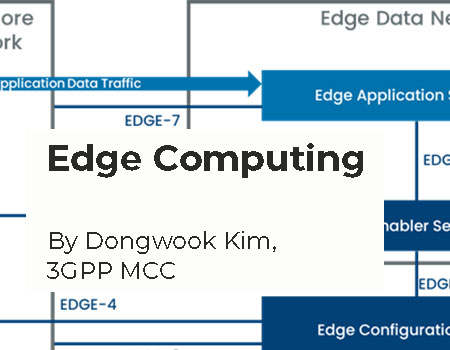
 Technology
Technology
